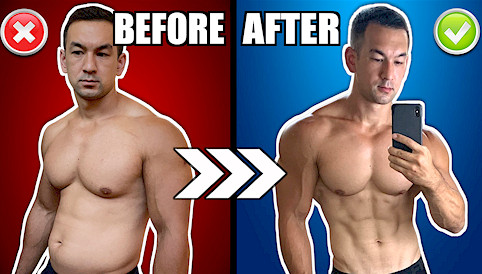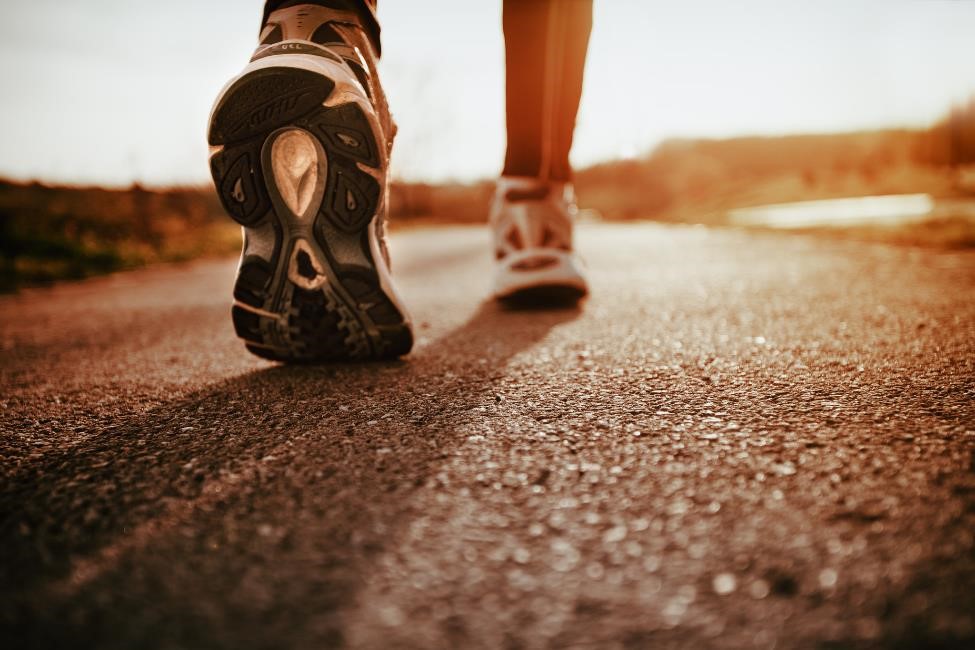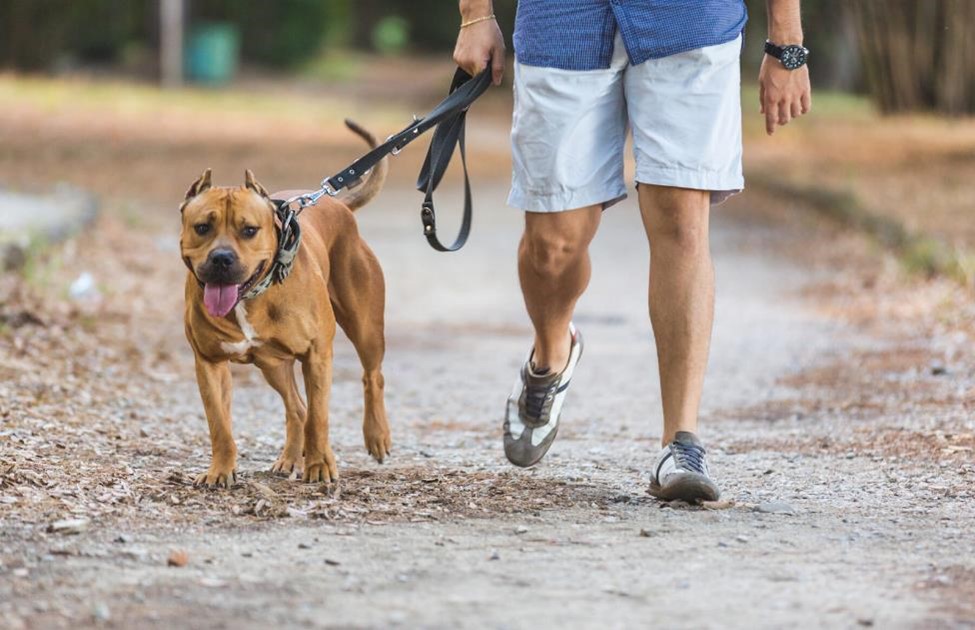HOW TO USE WALKING FOR FAT LOSS (THE EASIEST WAY TO GET LEANER!)

Want to Get Leaner? Try Walking for Fat Loss!
Is walking effective for fat loss?
Honestly, walking is one simple, but highly effective daily habit to help you lose fat and lean down more efficiently.
No, this is not some silly workout gimmick, or diet hack, or magical fat loss supplement. You guys know we don’t do any of that B.S. here.
This is a real, legitimate strategy and it was actually one of the key things I really made sure to focus on during my last fat loss phase. It definitely had a big impact on my results.
What’s the Real ‘Secret’ Behind Walking for Fat Loss?
The answer is…walking.
I know that’s not the most exciting thing in the world, but this really is a serious answer. It’s helped me, and it’s something that can definitely help you. Trust me when I say that walking will make a significant difference to your fat burning progress.
In this article, I’ll be explaining ways you can implement walking into your own fat loss routine. I’ll cover the 4 key benefits of using walking for fat loss, and I’ll also give you a few strategies you can use to make it as simple and effortless as possible.
To be fair, I’ll also mention a couple potential “warnings,” or, potential downsides to watch out for–and what to do about them.
Benefit of Walking for Fat Loss #1:

The first benefit of using walking as a primary fat loss tool is that it allows you to burn a significant number of calories. You’re also able to do this while putting minimal stress on your body as a whole.
Regular “traditional” cardio exercises to burn fat are of course fine to do, and I encourage you to incorporate at least some of that into your week. However, there’s only so much that running, stair stepping, rowing, or intervals you can do before it starts to potentially backfire.
Higher volumes of cardio are going to create more overall systemic and joint stress, along with more muscle damage. At a certain point, those things can start negatively impacting your recovery after weight training workouts, and even impair your performance on upcoming workouts.
Whereas with walking, you’re not really getting any of that. It’s very easy on your body, and if anything, it can actually improve recovery and even your joint health.
Benefit of Walking for Fat Loss #2:
The second benefit of walking is that it’s a very “gentle” activity to perform from the mental side of things.
It doesn’t produce the same level of psychological fatigue compared to more intense forms of exercise. You can go for a walk and get that calorie expenditure you’re after without feeling mentally exhausted in a way that could negatively carry over to other things you need to do during the day.
Work, school, or social obligations don’t have to suffer as they would from intense cardio. Walking allows you to burn calories without draining your willpower.
Benefit of Walking for Fat Loss #3:

The third benefit of walking is that it’s a very sustainable activity. It’s easy to stick to for most people.
This is absolutely crucial because if you really don’t like the type of exercise you’re doing, it’s only a matter of time before you burn out and quit.
Some people do enjoy those more traditional forms of cardio, but a pretty decent percentage don’t–and some people flat out hate it. Whereas with walking, it’s not something you need to psych yourself up for. You’re not going to be sitting around dreading that you have to go for a walk later in the day.
Plus, many find that once they get into the daily habit, walking is actually something they genuinely enjoy and look forward to. (Your furry friends will thank you, too).
Benefit of Walking for Fat Loss #4:
And benefit number 4, and this is a huge one: walking is not going to have the same appetite stimulating effect compared to more strenuous forms of cardio.
You can run on the treadmill and burn 500 calories, but that’s not going to do you any good if it causes your hunger to spike up in the hours afterward. Some people might want to just go and replace those same 500 calories (or even more than that) through their diet, which is a very easy thing to do if they aren’t careful.
Now, this doesn’t mean you won’t be hungry at all throughout the day. It is completely normal to feel hunger when dieting.
A calorie deficit will always stimulate your appetite to some degree, but it just won’t be as dramatic when you’re using walking as a primary calorie burning tool. As a result, it actually is going to help you maintain an overall calorie deficit more easily.
Now, there are a few things to watch out for here–which I’ll explain in a minute.
But the bottom line is this: fat loss is about maintaining a calorie deficit.
You have to consistently expend more calories than you consume: calories in versus calories out. What walking allows you to do is tip that ‘calories out’ portion of the equation in your favor, but without the potential side effects that can come from doing higher volumes of more strenuous cardio.
You can practically walk as much as you want and get that extra calorie expenditure. At the same time, you won’t be running into issues with systemic and joint stress, muscle damage, or excessive appetite stimulation.
Yes, that’s all well and good, but you might be thinking something along the lines of: “since walking is such a ‘light’ activity, how many calories am I really gonna burn doing it?”
Per unit of time, walking will obviously burn a lot less calories in comparison to running, swimming, or biking. However, when you extrapolate it over the course of an entire day, walking really does add up a lot, especially if you’re relatively sedentary right now outside of weight training.
How Many Calories Does Walking Burn?

Well, a lot of different factors come into play.
Here’s one basic example for the sake of argument. Let’s say you’re a 180 pound male who burns around 50 calories per 1000 steps at a moderate pace. You then increase your daily step count by 5000. While this is not a huge amount (pretty simple to do in most cases), that’s 250 extra calories burned per day, which translates to 1750 calories per week or roughly 7500 per month.
And, since 1 pound of fat contains roughly 3500 calories, that would equal out to just over 2 pounds of extra fat loss per month, which is not insignificant at all especially when you add it up over several months.
Of course, there’s nothing stopping you from adding even more than 5000 extra steps depending on your current situation. If it was even just a bit higher than that, then over the course of a 12 week fat loss phase you could be looking at as much as 7 or 8 pounds of extra fat loss.
This could all be achieved by incorporating this one simple thing into your day.
Not only can you burn a significant number of calories just through walking alone, but the best part is that because it’s something you’re already doing to some extent throughout the day as is. All you really need to do is find ways to maximize it in order to get your total step count up into an effective range.
I think for most people, around 8000 steps per day would be the bare minimum to aim for if this is something you want to take seriously. 10,000 steps would probably be more appropriate to use as your baseline.
From there, you can decide just how high you want to go, whether it’s 12,000; 15,000; or even more. There’s no real upper limit, and it just comes down to you as far as your personal preferences and how many extra calories you’re aiming to burn.
The Best Strategies to Reach Your Goal Step Count
First off, you can go for regularly scheduled walks, plain and simple.
You could do shorter walks more often–maybe 10-15 minutes periodically throughout the day, or maybe after meals. Or, you could do longer walks in the 30-60 minute range but less often.
I personally enjoy doing structured walks like this. I find it mentally beneficial in terms of helping me organize my thoughts, or come up with new ideas. Some of my best business insights or even just life insights in general tend to come when I’m out walking.
Another option you could do if you find walking to be boring is find something to listen to. This could be a podcast, audiobook, or even YouTube videos. That way you’re being even more efficient by getting the benefits of the walking itself, plus learning new information at the same time. This is something that’s a lot harder to do during more intense cardio sessions because your mind has to stay focused on the actual workout.
Now aside from structured walks outside or even on a treadmill (maybe if it’s too hot or too cold outside), you can also just take your existing daily schedule and find ways to add more steps into it.
For example, if you normally drive to work, the gym, or wherever else, it might be feasible for you to walk there instead, if it’s a short enough distance. Or, if you are driving, then there’s also the standard advice of parking further away. Once you’re inside, take the stairs instead of the elevator.
Things like this might sound kind of silly and insignificant, but you really have to think in terms of extrapolating these small things over the day as a whole.
More Strategies to Use Walking for Fat Loss
During work sessions, you can take periodic breaks to stand up and get some steps in. That’s probably just good for your body in general anyway, and is something your HR department might tell you is “more ergonomic.”
You can also walk while you brush your teeth or if you’re on the phone.
Another big one that I use a lot is to walk in between sets at the gym. So, rather than just sitting there scrolling on your phone, talking, or doing nothing at all, just stand up and walk around. If you make a concerted effort to get some steps in while you’re not lifting, your step count really adds up quite a bit over the course of a 60 to 90 minute weight training session.
You can also make walking a social activity. Say you’re supposed to meet up with someone for a coffee. You could suggest getting your coffee to go and taking a walk instead.
This last one might sound a bit goofy, but you can also literally just walk around your house. I actually did this quite a bit during my last fat loss phase when I was really trying to maximize my step count. If it got toward the end of the day and I hadn’t hit my targeted number, I’d just put on some YouTube videos and walk laps around the living room until I got there.
This brings me to another very important point. If walking is something you really want to incorporate into your day and take seriously, you ideally do want to be tracking your steps.
Why You Should Track Your Steps
![]()
When you have a set target in place and you can physically see how many steps you’ve taken so far, it really holds you accountable and gives you a gauge to work with throughout the day. It’s no different than how you would track progressive overload to gain muscle.
For example, if it’s late afternoon and you’ve been a bit lazy and can see that your step count is lower than normal, then whatever you use to track your steps is your reminder to literally step things up a bit (no pun intended) so that you’re not having to cram everything in later on.
Now, you could use the step counter on your phone, but it’s not going to be perfectly accurate since you’re probably not carrying your phone in your pocket every single place you go. In this case I’d recommend just buying a basic watch to track it for you.
You don’t need anything heavy duty here. You can buy basic ones on the internet for cheap. This is definitely a worthwhile investment and it can really make all the difference between consistently hitting your walking target every day versus just gradually falling off track with it.
There’s one final thing I should also mention here.
As beneficial as walking can be, and as much as I recommend it, this doesn’t necessarily mean that you should use it as a complete replacement for all other forms of cardio.
Of course, you can do that if you want. But just keep in mind that, like I already mentioned, walking is going to be less efficient in terms of calories burned per unit of time. If you want to burn a larger number of calories within a shorter window, consider a more intense cardio session. That will of course be more effective in that regard.
In addition, understand that walking won’t give you the same cardiovascular conditioning benefits that more intense cardio will.
If you want to significantly improve your conditioning, you need to stress your cardiovascular system. Only then will you create those adaptations. Walking on its own is not going to be enough for that. Neither will most typical hypertrophy style weight training workouts.
So, if you’re looking to optimize your overall and fitness in addition to building muscle and losing fat, then ideally you should still be getting in at least a couple regular cardio sessions during the week that really get your breathing and heart rate up.
The Bottom Line

To close this whole thing out, I’ll mention this last, very, very important point.
Yes, walking has a wide variety of benefits. But always remember that fat loss still ultimately comes down to calories in versus calories out in the overall picture.
You can burn as many calories as you want through walking. But if your diet isn’t on point, that means you’re consuming too many calories. It also doesn’t help in your fat loss goals if you’re replacing everything that you burn from walking. Thus, if you’re not in a net calorie deficit, you’re still not going to lose fat.
Thus, your diet should always be front and center in the fat burning process. It’s the most important factor of all. If you’re not properly managing your calorie intake, you’re probably not going to get very far.
So, get your diet properly dialed in, get your weight training plan correctly mapped out with the best muscle building workout plan for you, and then add walking into the equation to maximize things even further.
Just, don’t rely on walking as your sole fat burning tool.
If you found this article helpful, make sure to sign up for your FREE custom fitness plan below...




